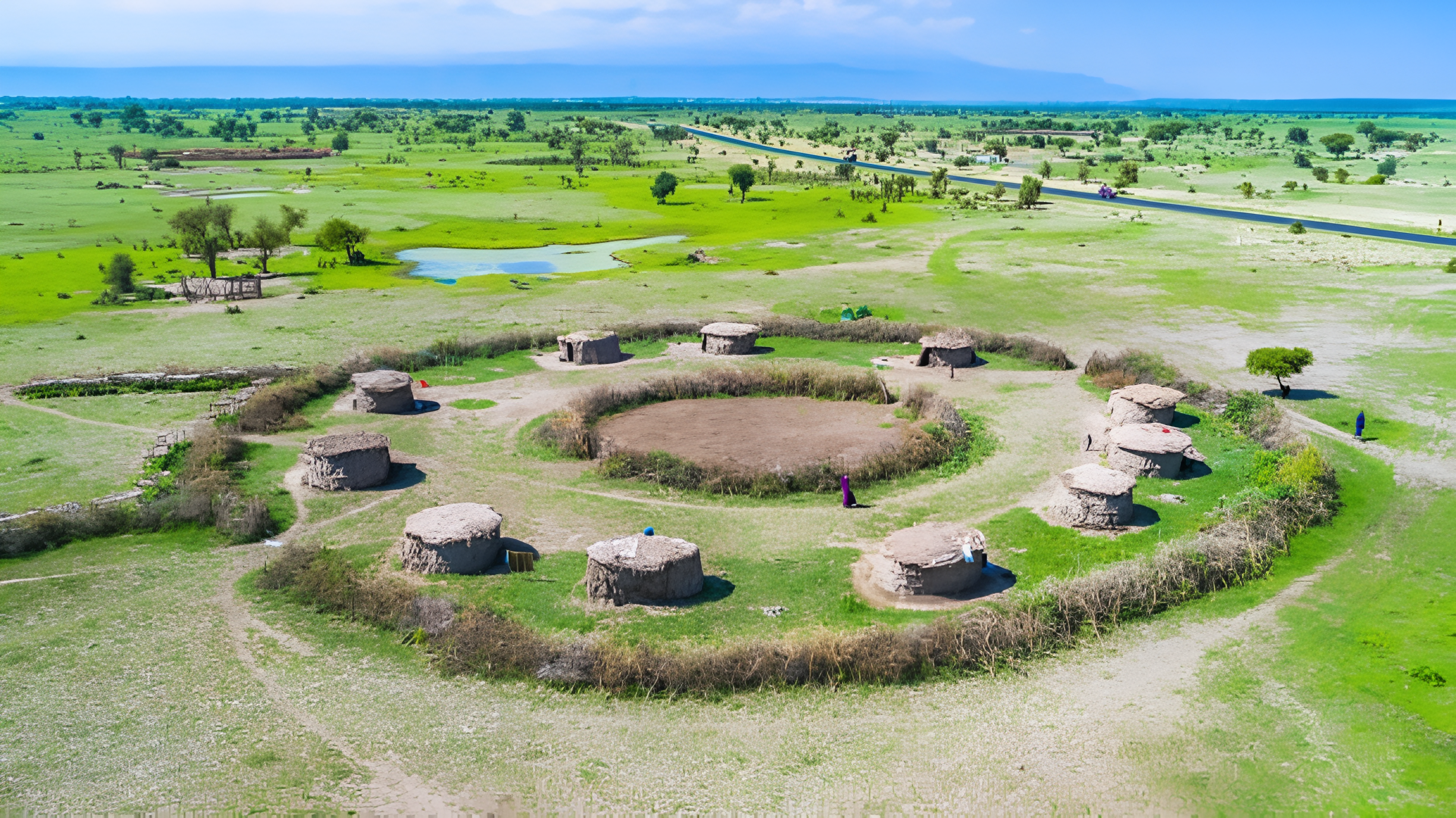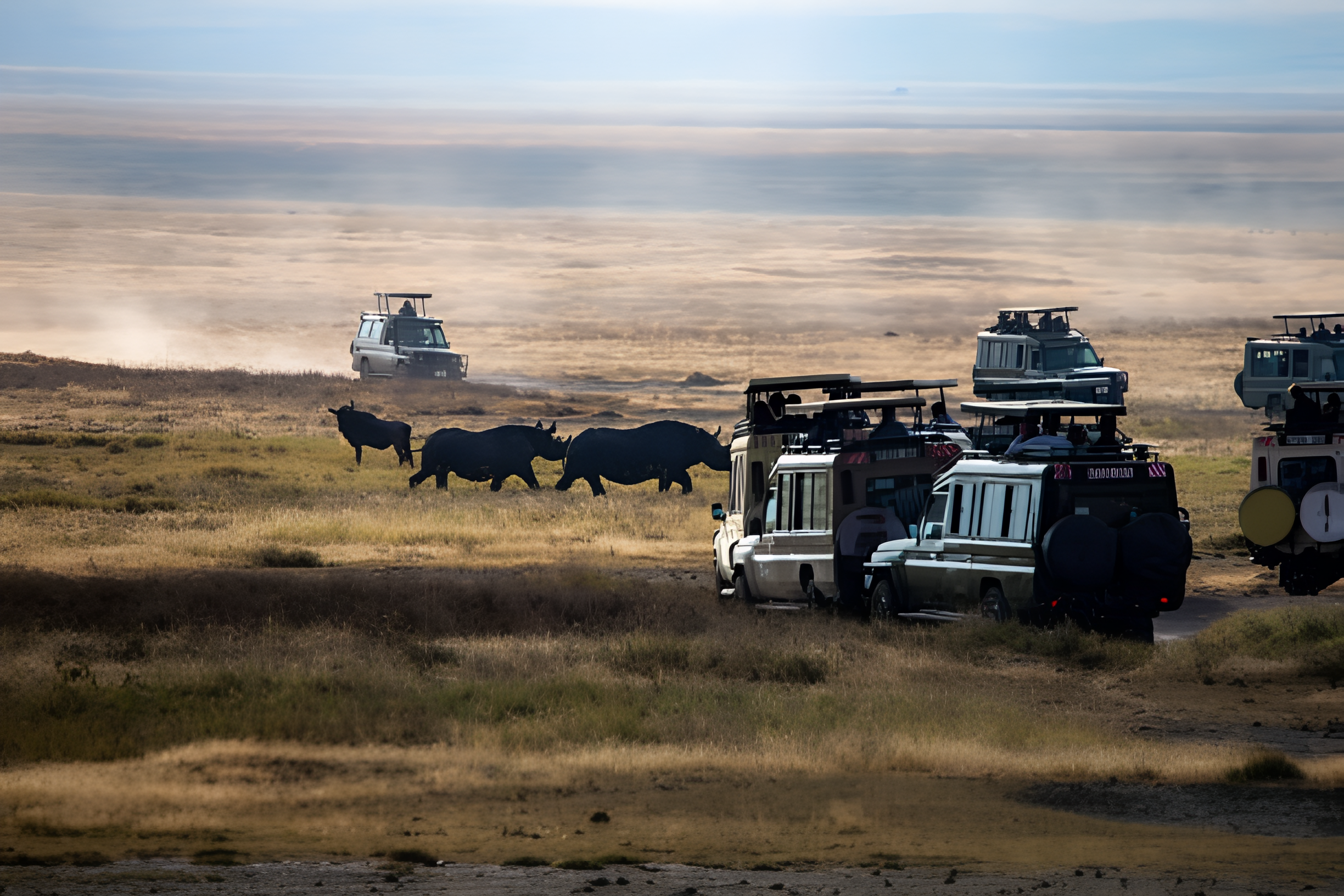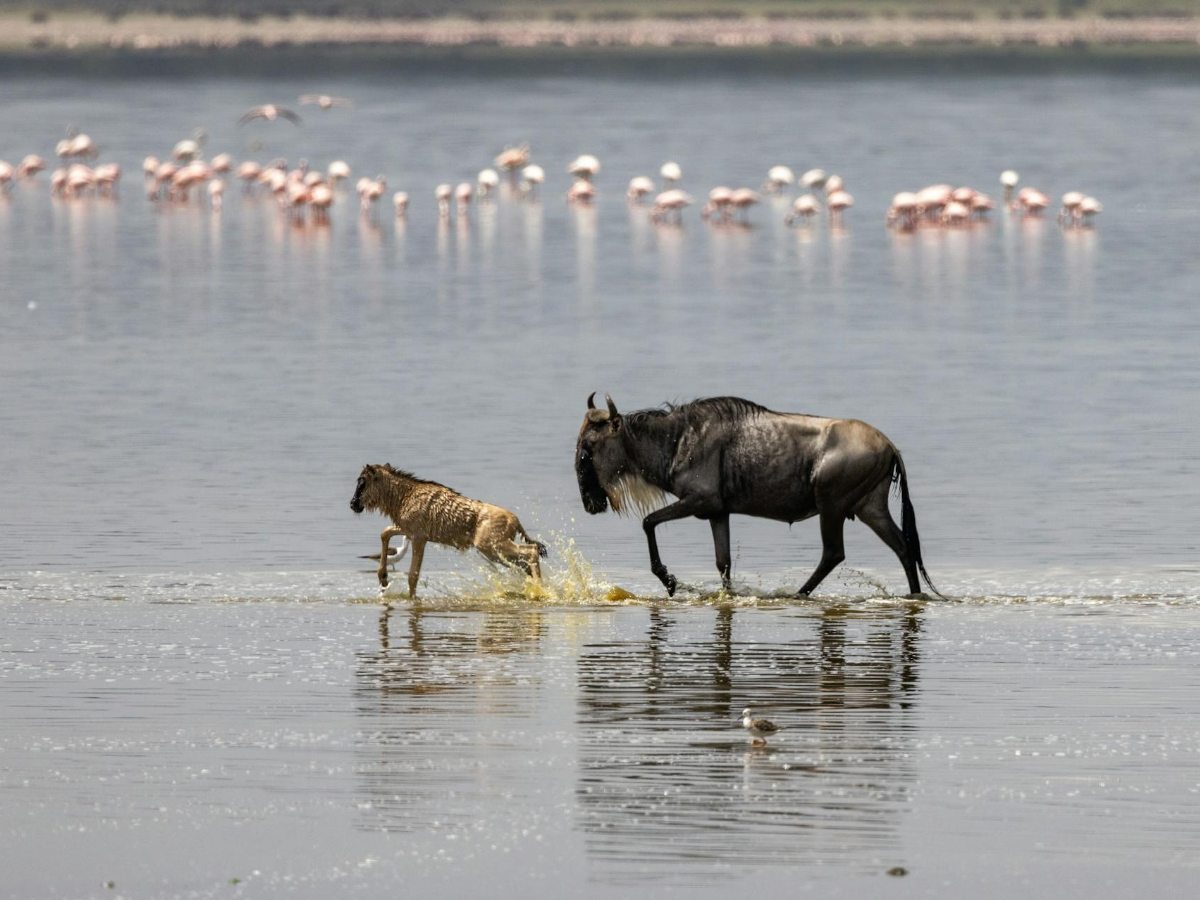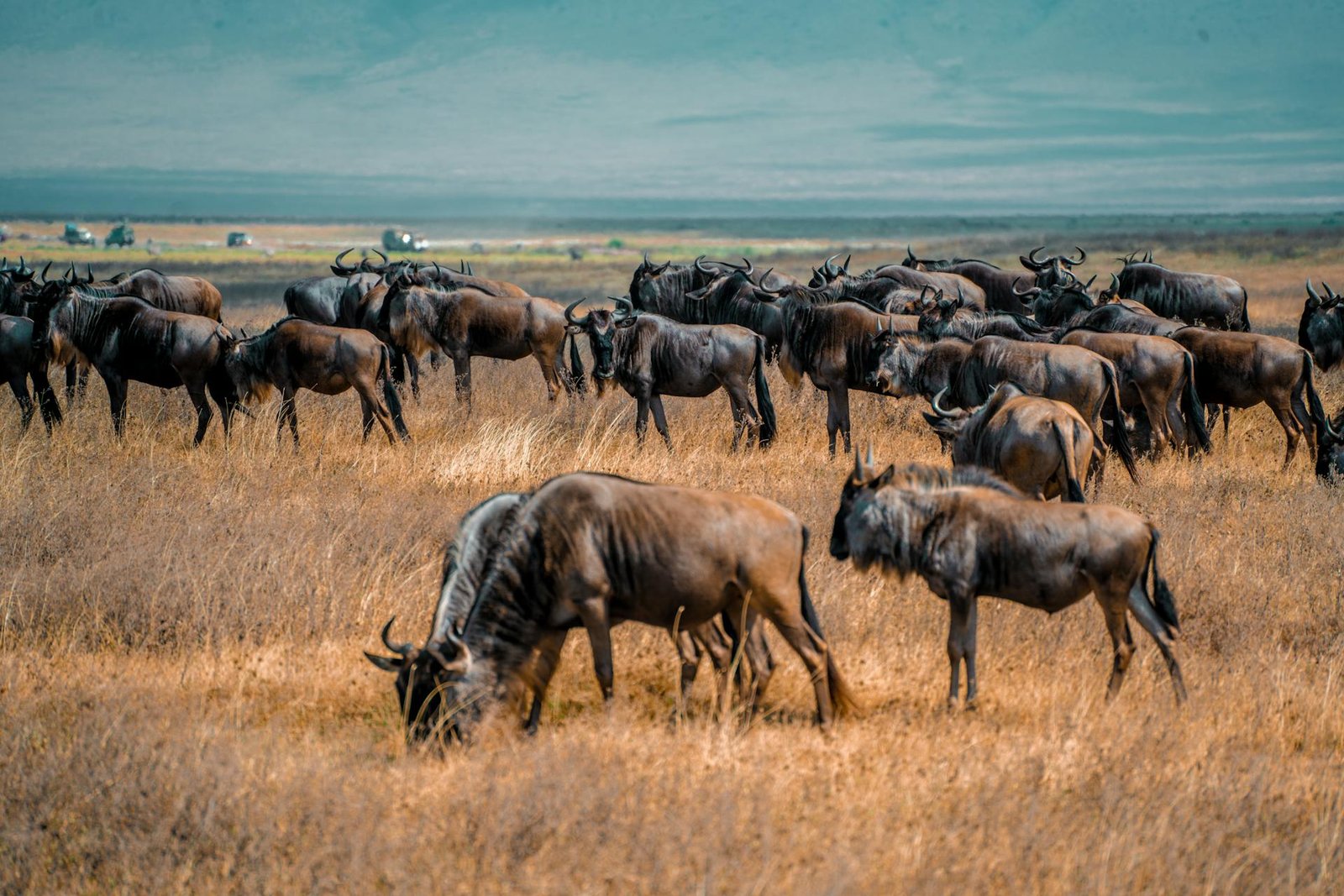Beyond The Lens: When Human Curiosity Threatens the Great Migration



The heart-stopping spectacle of the Great Wildebeest Migration is, for many, the ultimate African dream. We conjure images of thundering hooves, epic river crossings, and the raw, untamed drama of nature. It's a journey of millions, driven by ancient instinct, a testament to survival against all odds. But what happens when our human desire to witness this wonder, to capture that perfect shot, overrides the very respect these wild souls deserve? Recent events in both Kenya's Maasai Mara National Reserve and Tanzania's Serengeti National Park have thrust a stark question into the spotlight: are we, as tourists, becoming a threat to the very spectacle we travel so far to admire?
The Unfolding Disruption: A Costly Obstacle
New video footage, emerging from the Maasai Mara on 19th August 2025, painted a concerning picture: a crowd of vehicles, with tourists standing, brazenly blocking the path of the wildebeest desperately attempting to exit the Mara River near Purungat Gate. This follows similar disheartening imagery from Tanzania's Serengeti in July 2025. Imagine the sheer terror and confusion of these animals. They've just survived a perilous river crossing, risking their lives against powerful currents and lurking crocodiles, only to be met by an impenetrable wall of human curiosity.
This isn't just an inconvenience for the wildebeest; it's a critical disruption to their ancient, survival-driven moment. Every forced delay, every stressed moment, every diverted path costs these animals precious energy and can be the difference between life and death. Their journey is a race against time and exhaustion, and human interference throws a dangerous wrench into that delicate balance. This directly impacts the well-being of the Maasa Mara National Reserve wildlife and the Serengeti National Park's ethical tourism standards.

The Impact: Stress, Separation & Survival at Stake
When safari vehicles form a barrier or crowd animals, it creates immense stress. For wildebeest, particularly, this can lead to:
Failed Crossings: Animals may turn back into the river, risking re-crossing crocodile-infested waters or drowning from exhaustion.
Energy Depletion: Every unnecessary detour or moment of panic expends vital energy needed for their long journey and future survival.
Separation: Parents can be separated from their calves, leading to orphaned young.
Vulnerability: Confused or stressed animals are more vulnerable to predators, whose natural hunting patterns are also disrupted.
A Call for Conscience: Admiration, Not Interference
We travel to these magnificent landscapes to witness raw nature, to be humbled by its power and grace. But there's a profound difference between admiration and interference. These aren't creatures performing for our cameras; they are wild beings fighting for survival in their own habitat. Our role as visitors is to be respectful observers, to marvel from a safe, non-disruptive distance, and to leave no trace but footpaths.
The desire for a perfect photograph or an up-close video must never outweigh the well-being and natural flow of the wildlife. This is about prioritizing respecting wildlife safari etiquette above personal gratification.

How to Be a Responsible Safari-Goer: Our Pledge to the Wild
Being a conscious traveler means understanding our impact and choosing to be part of the solution.
Listen to Your Guides: Your safari guide is an expert. They understand animal behavior and park rules. Follow their instructions implicitly, especially regarding distances and movement.
Maintain Distance: Always keep a respectful distance from wildlife. Vehicles should never block migration routes or force animals to change their course.
Stay in Your Vehicle: For your safety and the animal's peace, remain inside your safari vehicle unless at designated, safe points.
Quiet Observation: Keep noise to a minimum. Avoid shouting, loud conversations, or sudden movements that could startle animals.
Leave No Trace: Take all your litter with you. Never feed wild animals.
Patience is Key: The best sightings often come to those who wait patiently, allowing nature to unfold naturally, rather than forcing an encounter. This leads to a truly unforgettable safari experience.

Preserving the Dream: Our Shared Responsibility
The Great Migration is a global treasure, a powerful reminder of Earth's enduring wild spirit. Its survival depends not just on conservation efforts within the parks, but on the conscious choices of every single tourist who visits. Let us be guardians, not disruptors. Let us choose nature admiration without harm, and ensure that future generations can witness the majestic wildebeest migration in all its untamed glory. Your Tanzania safari or Kenya safari experience should be a testament to awe and respect, not a cause for concern.

Have you witnessed an incredible wildlife moment while maintaining respect and distance? Share your tips for responsible safari tourism and help us preserve these precious ecosystems in the comments below!
Enjoyed this article?
Share it with your friends!
You might also like

Thundering Hooves, Wild Hearts: Witnessing the Great Migration in Tanzania (Africa’s Most Epic Wildlife Spectacle)
The Great Migration is raw, untamed Africa. Witness thousands of wildebeest surge across the Serengeti in nature’s most epic race for survival.

Silent Stalkers & Relentless Pursuits: The Great Migration Through a Predator’s Eyes (Serengeti’s Drama Unfolded)
A million hearts pound in a unified rhythm. The predator’s hunger listens for the single beat that falls out of time. This is the Serengeti’s true drama: not the journey, but the quiet, inevitable edit.

Chasing Giants on a Dime: Experiencing the Wildebeest Migration on a Budget (Smart Safari Hacks for Affordable Wildlife Encounters)
The greatest luxury on safari is the front-row seat. Here’s how to claim yours for a fraction of the price, and experience the raw wonder for yourself.

The Safari Superstars: Meeting Tanzania’s Iconic Big 5 (Your Ultimate Guide to Spotting Africa’s Most Legendary Animals)
The magic lies in the unpredictability - when elephants suddenly surround your vehicle or a leopard appears in a tree
